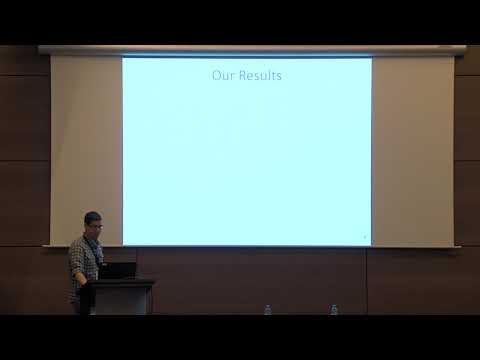Welcome to the resource topic for 2017/080
Title:
From Minicrypt to Obfustopia via Private-Key Functional Encryption
Authors: Ilan Komargodski, Gil Segev
Abstract:Private-key functional encryption enables fine-grained access to symmetrically-encrypted data. Although private-key functional encryption (supporting an unbounded number of keys and ciphertexts) seems significantly weaker than its public-key variant, its known realizations all rely on public-key functional encryption. At the same time, however, up until recently it was not known to imply any public-key primitive, demonstrating our poor understanding of this extremely-useful primitive. Recently, Bitansky et al. [TCC '16B] showed that sub-exponentially-secure private-key function encryption bridges from nearly-exponential security in Minicrypt to slightly super-polynomial security in Cryptomania, and from sub-exponential security in Cryptomania to Obfustopia. Specifically, given any sub-exponentially-secure private-key functional encryption scheme and a nearly-exponentially-secure one-way function, they constructed a public-key encryption scheme with slightly super-polynomial security. Assuming, in addition, a sub-exponentially-secure public-key encryption scheme, they then constructed an indistinguishability obfuscator. We settle the problem of positioning private-key functional encryption within the hierarchy of cryptographic primitives by placing it in Obfustopia. First, given any quasi-polynomially-secure private-key functional encryption scheme, we construct an indistinguishability obfuscator for circuits with inputs of poly-logarithmic length. Then, we observe that such an obfuscator can be used to instantiate many natural applications of indistinguishability obfuscation. Specifically, relying on sub-exponentially-secure one-way functions, we show that quasi-polynomially-secure private-key functional encryption implies not just public-key encryption but leads all the way to public-key functional encryption for circuits with inputs of poly-logarithmic length. Moreover, relying on sub-exponentially-secure injective one-way functions, we show that quasi-polynomially-secure private-key functional encryption implies a hard-on-average distribution over instances of a PPAD-complete problem. Underlying our constructions is a new transformation from single-input functional encryption to multi-input functional encryption in the private-key setting. The previously known such transformation [Brakerski et al., EUROCRYPT '16] required a sub-exponentially-secure single-input scheme, and obtained a scheme supporting only a slightly super-constant number of inputs. Our transformation both relaxes the underlying assumption and supports more inputs: Given any quasi-polynomially-secure single-input scheme, we obtain a scheme supporting a poly-logarithmic number of inputs.
ePrint: https://eprint.iacr.org/2017/080
Talk: https://www.youtube.com/watch?v=buO2LSA81xk
See all topics related to this paper.
Feel free to post resources that are related to this paper below.
Example resources include: implementations, explanation materials, talks, slides, links to previous discussions on other websites.
For more information, see the rules for Resource Topics .
